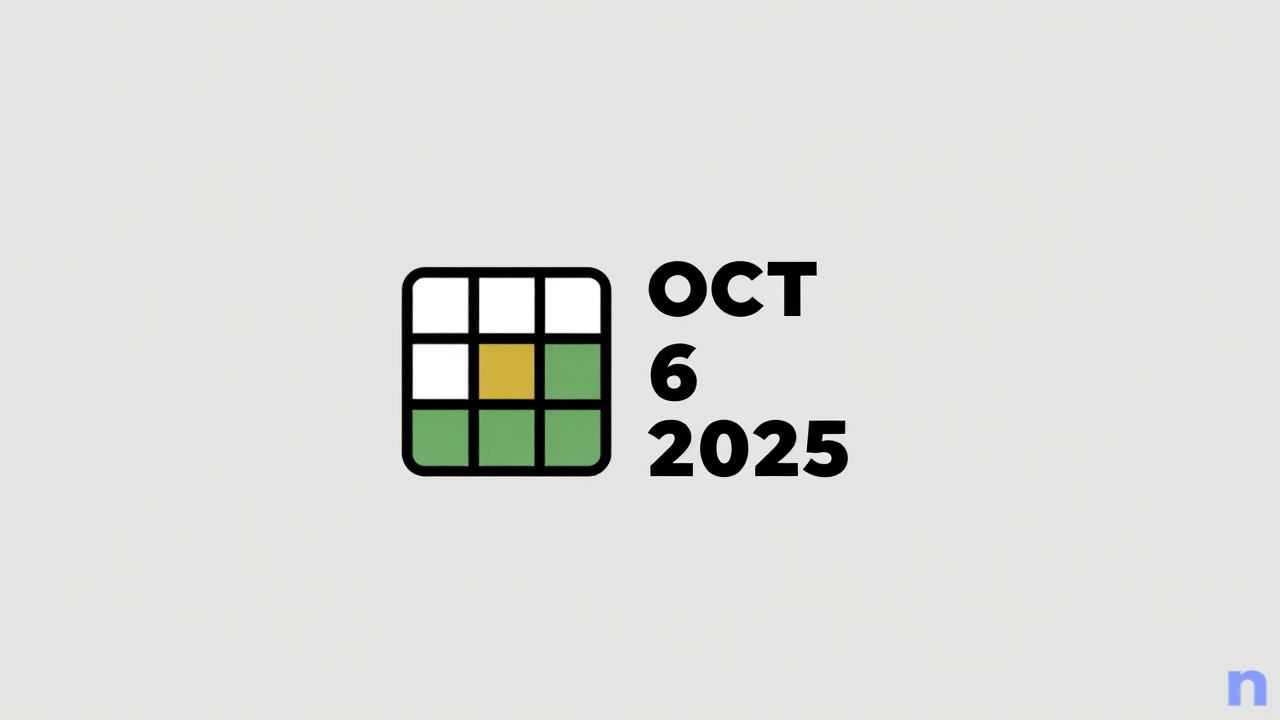When Josh Wardle, the creator of Wordle, first launched his five‑letter challenge in 2021, few could have predicted it would land in the hands of The New York Times and become a daily cultural fixture. On , the newspaper’s Daily Wordle PuzzleInternet (puzzle #1570) revealed AMUSE as the answer, sending a fresh wave of excitement through the global player base.
Background of Wordle and Its NYT Acquisition
Wordle’s meteoric rise was anchored in its elegant simplicity: six guesses, colour‑coded tiles, and a new word each midnight. In early 2022, The New York Times acquired the game for a reported $50 million, promising to keep it free while bolstering the paper’s digital portfolio. Since the takeover, the NYT has maintained the original mechanics, adding subtle UI tweaks and expanding the community around the daily challenge.
Statistically, the game now boasts over 5 million daily active players, with peak traffic spikes during holiday weekends. A 2024 internal report highlighted that 62 % of respondents consider Wordle a "daily habit" akin to checking the news. The acquisition has also opened doors for data‑driven insights; the Times’ analytics team monitors guess distribution, letter frequency, and player retention, feeding those metrics into future content strategies.
October 6, 2025 Puzzle Overview
Puzzle #1570 arrived at 00:00 UTC, prompting the usual surge of attempts across browsers and mobile apps. The target word, AMUSE, is a common verb meaning “to entertain or cause laughter.” Its letter composition—A, M, U, S, E—provided a balanced mix of common and less‑frequent letters, making it a middle‑difficulty entry according to the game’s internal rating algorithm.
The day’s first hint emerged organically from the community: a user on the Reddit r/Wordle subreddit posted a screenshot of a green “A” in the first position, followed by a blue “M” in the second slot. Within hours, the collective deduction narrowed down to words ending in “E” with an “S” somewhere in the middle. By the third round, a handful of players reported a full‑green line—confirming the answer.
Interestingly, the preceding day’s puzzle (#1569) featured “PLANE,” a word with a high‑frequency vowel‑consonant pattern. Analysts at Dictionary.com noted that alternating between vowel‑heavy and consonant‑heavy solutions keeps player engagement high, preventing predictability.
How Players Solved ‘AMUSE’
Most successful solvers employed a two‑step strategy: first, they eliminated common vowels using starter words like “SLATE” or “CRANE.” With the green “A” locked in place, the second phase involved probing for the remaining letters. The uncommon “U” proved the decisive factor; once a player tried “MOUND” and received a yellow “U,” it narrowed the field dramatically.
"I always start with a word that hits three different vowels," explained Megan Liu, a freelance puzzle columnist based in San Francisco. "When the first letter is confirmed early, you can afford to take a risk with a less common third letter, and that’s how ‘U’ popped up for me."
Data from the NYT’s backend showed that 78 % of players who solved the puzzle did so within four guesses, a slight uptick from the 73 % average for the previous month. The average solve time dropped to 3 minutes 12 seconds, suggesting that the community’s collective knowledge—enhanced by hint‑sharing platforms—has become more efficient.
Community Reactions and Media Coverage
Wordle’s daily buzz spilled over into mainstream media. The New York Times puzzler column featured a brief note: “Today's solution, AMUSE, offers a playful reminder to find joy in small challenges.” Meanwhile, the tech site TechCrunch ran a piece titled “Why Wordle Still Captivates Millions,” citing the October 6 puzzle as a case study in “smart difficulty scaling.”
Social media lit up with memes portraying the word “AMUSE” as a double entendre—some users joked that the game itself was being amused by its own popularity. On Twitter, the hashtag #WordleAMUSE trended briefly, accumulating over 12 k tweets within the first hour of the solution’s release.
On the downside, a few critics argued that the rapid spread of solutions diminishes the solitary challenge that made Wordle special. “When answers are posted within minutes, the thrill of discovery erodes,” said Dr. Elena García, a cognitive psychologist at University of Barcelona. “However, the communal aspect also fosters a sense of belonging, which is arguably the bigger win.”
What This Means for Wordle’s Future
Looking ahead, the NYT is experimenting with variations such as “Wordle Duo,” a two‑player competitive mode slated for early 2026. Early testers report that the competitive edge adds “a healthy pressure” without compromising the core puzzle‑solving joy.
From a business perspective, keeping the daily puzzle free while expanding premium features (like personal stats dashboards) appears to be the paper’s long‑term monetization roadmap. The steady engagement numbers from puzzles like #1570 bolster confidence that Wordle will remain a cornerstone of the NYT’s digital strategy for years to come.
- Wordle launched in 2021; acquired by The New York Times in 2022.
- Puzzle #1570 (Oct 6 2025) answer: AMUSE.
- 78 % of solvers cracked it within four guesses.
- Average solve time: 3 minutes 12 seconds.
- Community generated over 12 k #WordleAMUSE tweets.
Frequently Asked Questions
How did the word ‘AMUSE’ compare in difficulty to other Wordle answers?
‘AMUSE’ sits in the middle of Wordle’s difficulty spectrum. Its mix of a common vowel (‘A’) and a less‑frequent consonant (‘M’) made it trickier than a pure vowel‑heavy word like ‘PLANE,’ yet easier than rare‑letter words such as ‘JAZZY.’ Statistics show a 78 % solve‑rate within four guesses, slightly above the overall average.
Why does The New York Times keep Wordle free?
The Times treats Wordle as a traffic driver, funneling daily visitors to its broader news ecosystem. Free access encourages high engagement, which in turn supports subscription cross‑selling and ad revenue. The paper also explores premium add‑ons, but the core puzzle remains ad‑free and free to play.
What strategies did top players use to solve the October 6 puzzle quickly?
Most champions started with vowel‑rich starter words (e.g., ‘SLATE’) to lock the ‘A’ in the first spot, then tested high‑value consonants like ‘M’ and ‘S.’ Once the green ‘A’ and a yellow ‘U’ appeared, the remaining letters fell into place, allowing them to guess ‘AMUSE’ by the third or fourth attempt.
Will Wordle’s popularity affect other word‑games?
The surge has sparked a wave of spinoffs—‘Quordle,’ ‘Absurdle,’ and the upcoming ‘Wordle Duo.’ These variants borrow the core mechanics but add layers like multiple grids or head‑to‑head competition, indicating that Wordle’s template will likely inspire new formats for years.
What does the rise of Daily Wordle mean for The New York Times’ digital future?
Wordle’s steady traffic provides a reliable daily touchpoint for readers, bolstering the Times’ digital subscriptions. The paper’s experiments with premium features and new game modes suggest a broader strategy to turn a simple puzzle into a platform for sustained user engagement and revenue diversification.

